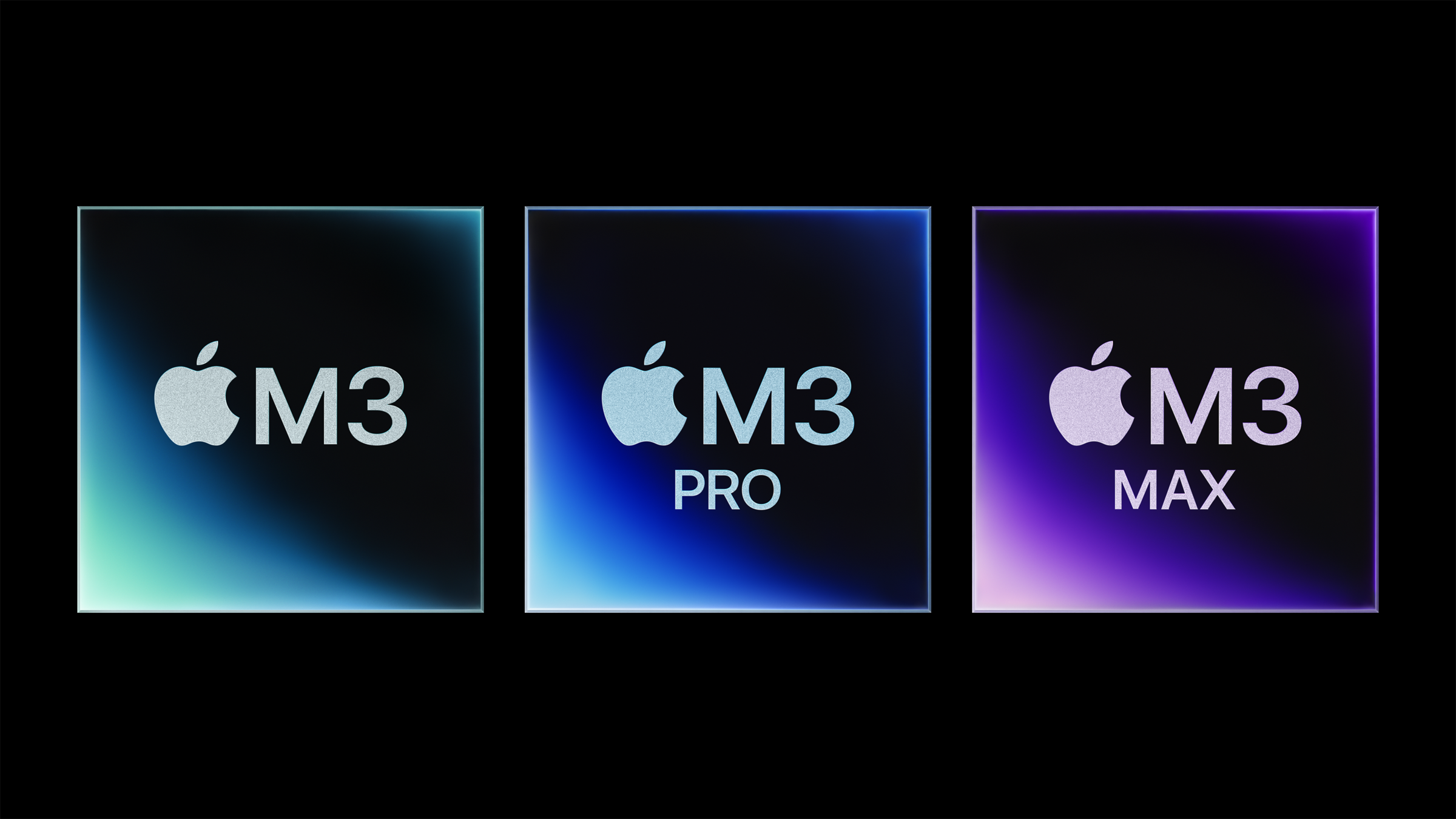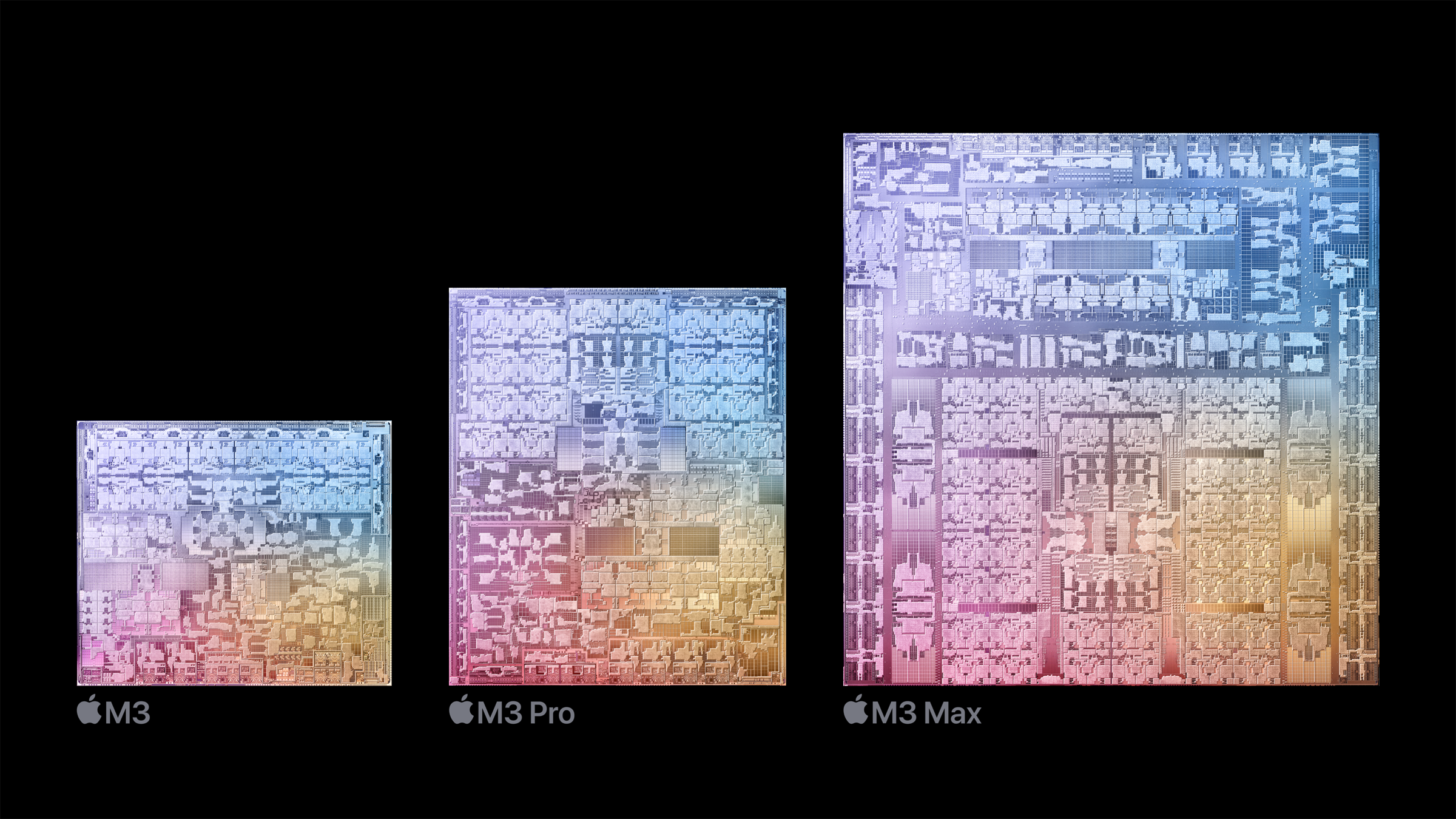Apple M3 chip announced with groundbreaking graphics — Dynamic Caching, ray tracing, mesh shading and more
Apple M3 chips promise to deliver significant performance gains over previous M-series processors

Apple M3 chips have arrived. As the first 3nm chips for personal computers, Apple’s newest processors promise to deliver significant performance and graphical improvements over prior M-series chips. The entry-level chip will power the iMac M3 and new 14-inch MacBook Pro, while the M3 Pro and M3 Max drive the latest 14- and 16-inch MacBook Pros.
The M3 lineup has a “next-generation” GPU that will take Apple silicon’s graphical capabilities to the proverbial next level. A new feature called Dynamic Caching allocates the use of local memory in hardware in real time and only uses the exact amount of memory needed for specific tasks. According to Apple, this feature is an industry first and will increase the performance of demanding applications and video games.
Hardware-accelerated ray tracing makes its debut on Mac thanks to the new M3 chips. The new GPU also brings hardware-accelerated mesh shading to Mac. This should all result in higher-quality graphics with more accurate lighting and detailed environments. Apple says the M3 GPU delivers the same performance as Apple M1 at half the power — up to 65% more performance at its peak.

The M3’s CPU is also receiving improvements over previous M-series chips. Apple says the performance cores are up to 30% faster than M1, while efficiency cores are up to 50% faster. The M3 line will apparently have the same multi-core performance as M1 but uses as little as half the power — up to 35% more performance at peak power, according to Apple.
The entry-level M3 chip features 25 billion transistors. For those keeping count, that’s 5 billion more than Apple M2. This chip has a 10-core GPU that is 65% faster than M1 for graphics performance, claims Apple. It also features an 8-core CPU (4 performance, 4 efficiency) that’s 35% faster than M1 for computing performance. The base M3 supports up to 24GB of unified memory.
Next is the M3 Pro chip, which has 37 billion transistors and an 18-core GPU that’s up to 40% faster than M1 Pro. This chip has a 12-core CPU (6 performance, 6 efficiency) that can deliver up to 30% faster single-threaded performance over M1 Pro. M3 Pro has up to 36GB of unified memory.

Lastly, we have the king of the new M-series lineup: the M3 Max. This processor contains 92 billion transistors, a 40-core GPU that’s 50% faster than M1 Max and a 16-core CPU (12 performance, 4 efficiency) that’s up to 80% faster than M1 Max. As if that wasn’t impressive enough, this monster processor can support up to 128GB of unified memory. This chip should easily handle demanding tasks like video editing.
Sign up to get the BEST of Tom's Guide direct to your inbox.
Get instant access to breaking news, the hottest reviews, great deals and helpful tips.
The new M3 chips have an enhanced Neural Engine meant to accelerate machine learning (ML) models. This Neural Engine is up to 60% faster than in the M1 series, says Apple. M3 processors also have an advanced media engine that provides hardware acceleration for video codecs like H.264, HEVC, ProRes and ProRes RAW. The media engine even supports AV1 decoding, which is a first for Mac.
Outlook
Apple’s M1 chips were revolutionary when they debuted in 2020 due to the power and efficiency they provided over Intel-powered Macs of the time. While M2 processors improved on M1, the gains over the previous generation weren’t exactly groundbreaking. This, among other things, likely contributed to the recent slump in MacBook sales.
We’ll need to get M3-powered Macs into our testing lab to see if the new processors are as powerful as Apple claims. If everything we’ve heard is true though, then perhaps M3 can generate renewed interest in Apple’s computers.
More from Tom's Guide

Tony is a computing writer at Tom’s Guide covering laptops, tablets, Windows, and iOS. During his off-hours, Tony enjoys reading comic books, playing video games, reading speculative fiction novels, and spending too much time on X/Twitter. His non-nerdy pursuits involve attending Hard Rock/Heavy Metal concerts and going to NYC bars with friends and colleagues. His work has appeared in publications such as Laptop Mag, PC Mag, and various independent gaming sites.
